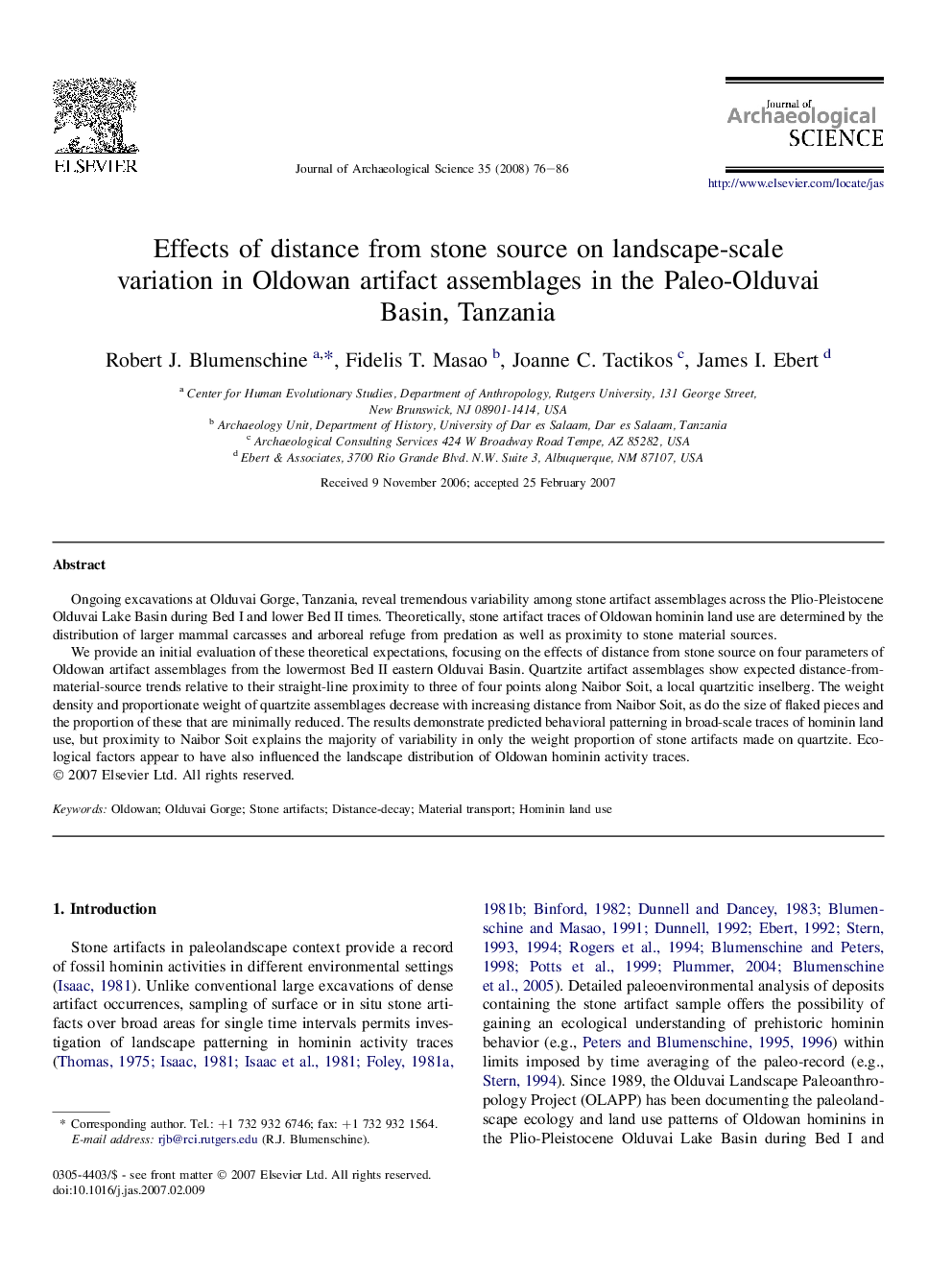| Article ID | Journal | Published Year | Pages | File Type |
|---|---|---|---|---|
| 1037100 | Journal of Archaeological Science | 2008 | 11 Pages |
Ongoing excavations at Olduvai Gorge, Tanzania, reveal tremendous variability among stone artifact assemblages across the Plio-Pleistocene Olduvai Lake Basin during Bed I and lower Bed II times. Theoretically, stone artifact traces of Oldowan hominin land use are determined by the distribution of larger mammal carcasses and arboreal refuge from predation as well as proximity to stone material sources.We provide an initial evaluation of these theoretical expectations, focusing on the effects of distance from stone source on four parameters of Oldowan artifact assemblages from the lowermost Bed II eastern Olduvai Basin. Quartzite artifact assemblages show expected distance-from-material-source trends relative to their straight-line proximity to three of four points along Naibor Soit, a local quartzitic inselberg. The weight density and proportionate weight of quartzite assemblages decrease with increasing distance from Naibor Soit, as do the size of flaked pieces and the proportion of these that are minimally reduced. The results demonstrate predicted behavioral patterning in broad-scale traces of hominin land use, but proximity to Naibor Soit explains the majority of variability in only the weight proportion of stone artifacts made on quartzite. Ecological factors appear to have also influenced the landscape distribution of Oldowan hominin activity traces.
